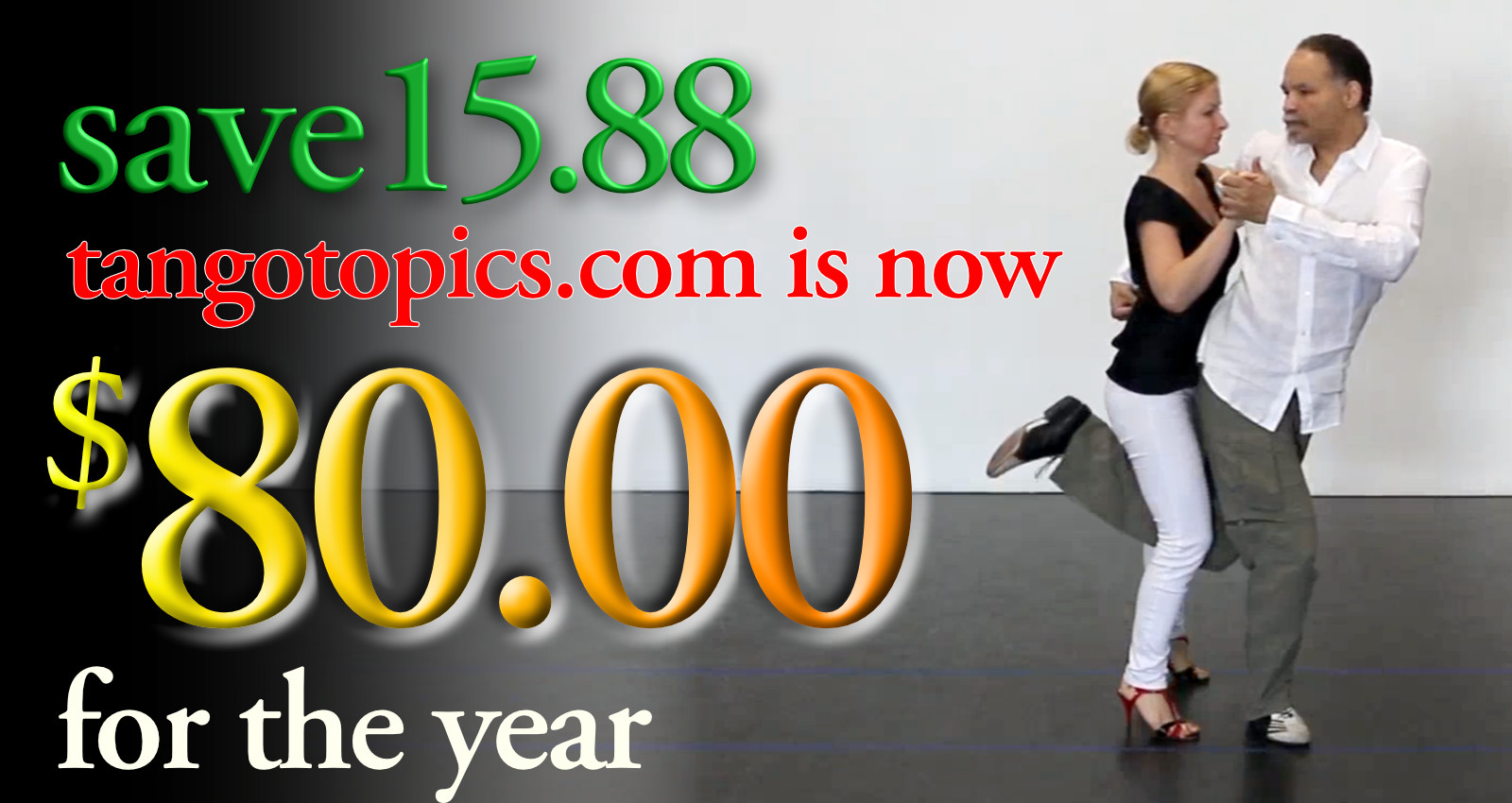The Spanish word ‘Cortina‘ when translated to English means “Curtain”. When the word is used in relation to Argentine Tango it is meant as a divider between one style or genre of Tango Music and another. It is a term used to define the gaps between the Tandas of Tango Music. Term in this case means a phrase, not a duration of time.
In the Modern Milonga (more on this distinction is below and why it’s necessary) around the world and most certainly in Buenos Aires, and sometimes at Tango Practicas in the United States and Europe (see: Practica), Tango Music is played in sets of music. Those sets of music are called “Tandas”. Tandas usually consist of 3 (sometimes 4) songs by the same orchestra, in the same style or genre, which is typically Tango, Milonga, or Vals. So for example a Tanda would consist of 3 Tango Songs by Carlos Di Sarli’s Orchestra. This is known as a “Tanda”. As a way to distinguish between those sets of music, tandas, that the style of music is changing, an auditory ‘palette washer’ is used and that’s what we call a Cortina. [It should be noted that the word “Tango” has 2 different meanings. Whereas the word “Milonga” has 3. In this instance, the words are used to define a style of music, which are radically different from each other but they’re both used to define the entire category of Music that one typically associates with the dance of Argentine Tango.]
In it’s simplest form the Cortina is a way to tell the dancers on the floor, that the Tanda has ended. Some milongas view the Cortina as the way to tell the dancers to clear the floor and make it a rule to do so. In the Cortina’s more complex form, it’s a way for the Tango DJ to distinguish themselves, and their musical selection as a way to weave together a musical tapestry that makes sense and creates a certain mood or conveys an idea that can complement the tanda selection. The Cortina can also be a way for a Tango DJ to keep the room interested and engaged.
Historically speaking, Tango Music from the 1920s thru the late 50s was played mostly by an Orchestra (20 piece orchestras). After that time period, it becomes common practice for recorded music to be played in the social dance halls. The reason was that it was cheaper than hiring the orchestra and easier. Not to mention while a dance hall would hire the Orchestra for the entire night, they’d play for a duration and then stop, take a break, then play for another hour or so, and then stop. Therefore it was far more economical for the dance hall to use recorded music. At the same time, it should be noted that when the Orchestra was hired to play, they wouldn’t just play Tango Music, but rather a wide range of musical styles – Jazz, Swing, Fox Trots. Which is why if you dig a little deeper into Tango Music as a whole, you’ll see some Orchestras also recorded Fox Trots for instance (see: Interview with Alberto Podesta). The idea of a Milonga using only Tango Music is a very recent move. A dancer going out for a night of dancing would be well versed in several styles of dancing Tango was just one among many.
This historical note seemingly doesn’t apply to the idea of Cortina, until you remember that the Orchestras didn’t play ‘interludes’, nor did they play batches of tango music. They played whatever moved the crowd in whatever order. The idea of grouped Tango Only music or Tandas of music and the Cortina (or Curtain) as a way to distinguish the music is a very recent evolution. As recorded music became the norm and the orchestrated music became the specialty item, an evolution of interludes became an absolute necessity as a way to distinguish between when the music stopped. Silence was just not an option. So the interlude grew into the Cortina, and the Cortina became it’s own thing.

